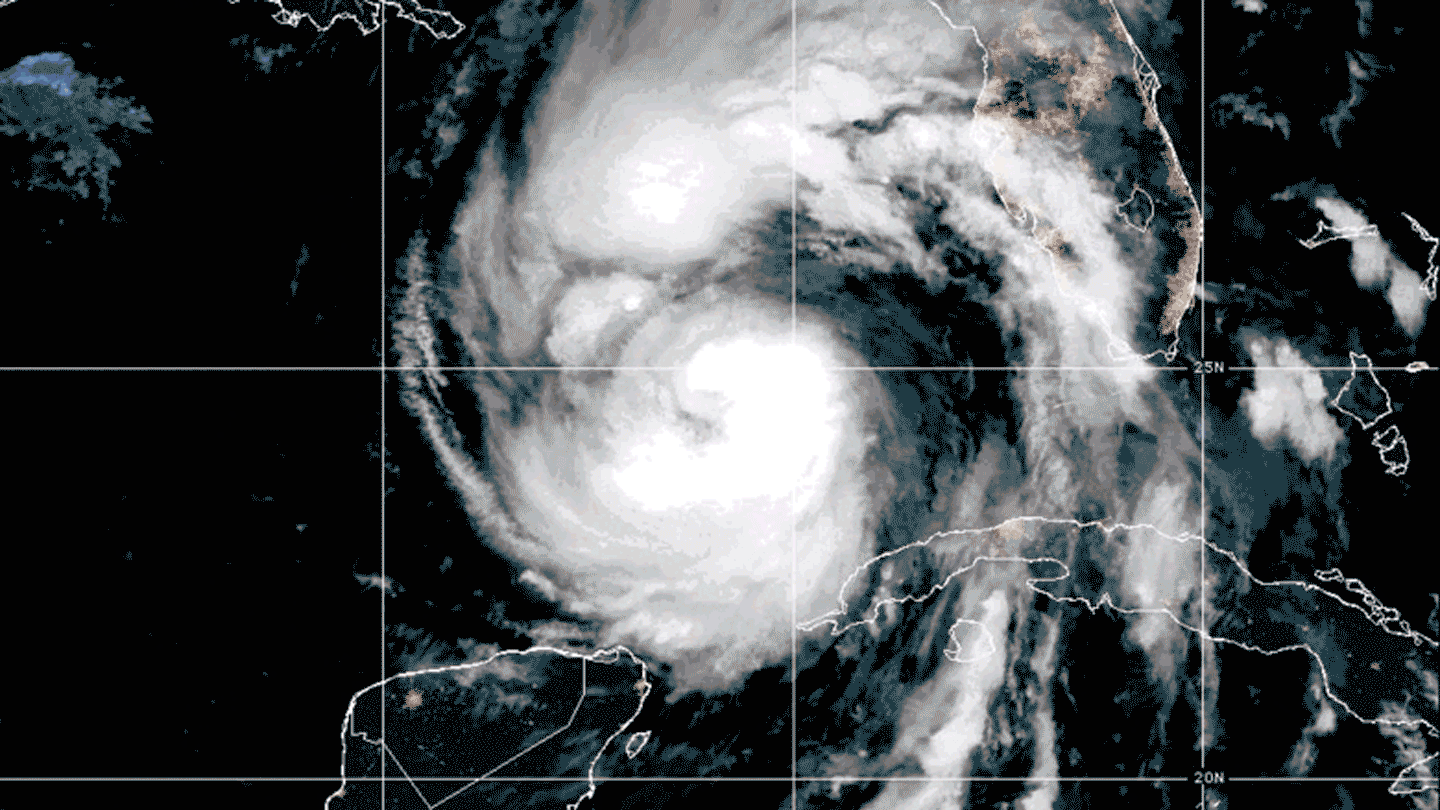Jak gwałtowne nasilenie wywołało dwa potworne huragany w ciągu jednego tygodnia

One of the widest hurricanes on record slammed into Florida’s Gulf Coast on September 26 as a powerful Category 4 storm, inundating Florida’s coast with meters-high storm surge and sending tropical storm–force winds as far as 500 kilometers from its eye.
Helene — like so many hurricanes in recent years — seemed to spin up out of nowhere.
Just three days earlier, it was a disorganized cluster of thunderstorms off the eastern coast of Mexico’s Yucatán Peninsula. A mere “tropical disturbance,” it was dubbed PTC9 for tracking purposes. But on September 24, the U.S. National Hurricane Center released a startling forecast for PTC9.
Science News is collecting reader questions about how to navigate our planet's changing climate.
What do you want to know about extreme heat and how it can lead to extreme weather events?
Within just 60 hours, NHC predicted PTC9 would intensify at a record-breaking pace, going from winds less than 35 knots (about 65 kilometers per hour) to hurricane-force winds of at least 100 knots (185 kilometers per hour).
It was the fastest predicted spin-up from disturbance to major hurricane in the NHC’s history.
And those predictions were right. Fueled by deep, superhot Gulf of Mexico waters, and unhampered by any shearing winds that might stutter the storm’s growth, Helene went into overdrive.
Here are three things to keep in mind as Helene continues to barrel into the southeastern United States.
NHC defines rapid intensification as when a storm’s maximum sustained winds jump by at least 56 kph (35 miles per hour) in less than a day (SN: 9/13/23).
Against a backdrop of ongoing, record-breaking tropical water temperatures, numerous storms in the last few years have met and even surpassed this definition (SN: 6/15/23). In 2023, for example, Atlantic hurricanes Idalia and Lee ratcheted up their intensity by about 58 kph within 24 hours.
Helene isn’t just a textbook case of such rapid intensification — it’s the star student.
Scientists have been gritting their teeth, anticipating just such an event, given 2024’s superhot waters. Helene’s fury was fueled by record-hot temperatures in the Gulf of Mexico. Sea-surface temperatures in the Gulf are high, in some places 2 degrees Celsius higher than the September average of around 29° C. But even more importantly, the Gulf’s excess ocean heat isn’t just skin-deep: The waters stay very warm deep into the water column, increasing the overall ocean heat content and providing even more fuel for a swirling storm (SN: 7/2/24).
Another favorable factor for hurricane formation in the Gulf was the absence of wind shear, changes in wind direction or speed higher into the atmosphere. Faster upper-atmosphere winds can eat away at a tightly swirling cyclone, by whisking away the heat and moisture they need from their centers.
Even as Helene took center stage, forecasters were reeling from the sudden intensification of another tropical cyclone, Hurricane John, which made landfall September 23 on Mexico’s southern Pacific coast.
That was two full days earlier than researchers had predicted.
Also fueled by warm ocean waters, the storm had spun up into a Category 3 hurricane just a few hours after being classified as a tropical storm. That dramatic, sudden surge in power and speed caught both scientists and officials off guard as they scrambled to issue alerts ahead of its landfall.
As Helene and John show, storms both large and small can be subject to rapid intensification. But recent research suggests that there may be a reason why forecasters were more caught off guard by John’s sudden ramp-up. And that may have to do with the storm’s size.
A 2014 analysis of tropical cyclone size and intensification from 1990 to 2010 suggested that smaller, compact storms like John — just a fraction of the width of Helene — may be especially prone to intensifications so sudden that they may confound predictions.
In particular, how large the inner core — the eye of the hurricane — is at the outset may come into play. That may be because storms with larger inner cores can be more resistant to structural changes from outside forces. Such forces can include heat transfer from ocean waters.
In August, NHC debuted an experimental hurricane forecast cone that includes not only a storm’s projected path toward land, but also regions where its powerful winds might be felt far inland. The goal of this new type of projection, the center said in February, is to heighten public awareness about hurricane hazards that can exist even far from the storm’s eye, or long after landfall (SN: 2/29/24).




